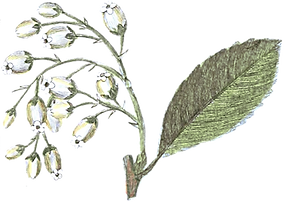Flexibly Sequential Play Therapy: A developmental sensitive model for trauma treatment with children
- karlaeskerod
- Apr 28, 2015
- 4 min read

Paris Goodyear-Brown, a Registered Play Therapist Supervisor and licensed clinical Social Worker, was welcomed by Alberta Play Therapy Association, alongside various child and family therapists from around Alberta to present the Flexibly Sequential Play Therapy (FSPT) model. Paris discussed key concepts for treating traumatized children and the significance of neuropsychology. Components of FSPT included enhancing the safety and security of the child, assessing and augmenting coping, soothing, relaxation and stress management, emotional literacy, trauma narrative, and play based gradual exposure.
Treatment Goal and Interventions: Ideas from Paris
Coping Tree: Have client draw a tree. Next draw or add fruit stickers. Ask the client what she does when she thinks about the scary thing that happened. Put adaptive strategies in the tree as fruit and write the activity and write maladaptive strategies on the ground as fallen fruit.
Gathering a Team: Create a chain of paper dolls. Ask the client to indentify who is a comforting and safe person in their life. Who spends time with them? Who says nice things to them? Who teaches them? This activity helps the therapist and client understand and acknowledge their external resources.
Balancing Act: Have the client balance a peacock feather on their hand. This activity is a calming, grounding, mindfulness exercise. Try using heart math or have the child check-in with themselves to see how their body feelings following the relaxing activity.
The Bubble Fall: Blow bubbles to create a visual image while child listens to relaxing music.
Cooked and Uncooked Spaghetti: Have the child act like stiff cooked spaghetti then relax their body and proceed to bend like cooked spaghetti.
Bubbles: First the therapist breathes fast through the bubble wand to show that it does not create a bubble. Next do this slow and long to create a big bubble. Discuss with the child how it feels to breathe both ways. As homework, ask the child to create three large bubbles each day.
Picture Perfect Postcards: The child is asked to picture their special/safe place, or a place their imagination takes them. Check-in and ask the child to connect with their thoughts and feelings when looking at the postcard. Address the postcard to a special person.
Good Behaviour Book: Have parent document three things the child did well that day. Read before bedtime.
Stars for my Family: Give cutout starts to family. Encourage family to write stars for one another. At the end of the week pull one star from the pile and the person who wrote the star or who the star was written for gets to pick the family activity for the evening.
Sweet Dreams Lotion: Have a basket of different scents of lotions. Ask the parent and child to discuss a memory the scent reminds them of. Create your own lotion together to take home. Put on child with hand massage.
Colour My Heart: Have child choose five colours which represents five emotions they feel. One could be happy, another sad, mad, scared, etc. Next ask the child to draw a piece of their heart where the trauma happened and the feelings they felt. You may choose to use this activity at the beginning and end of counselling.
Art: Ask child to create an open art piece which reflects their life before the trauma, during, and after the trauma.
Attachment: Give me five words to describe you and your mother’s relationship. Now create five symbols which represent your relationship with your mother. Adaption- change caregiver.
Sand-Tray: Pick a symbol to show where you are today. Next pick a symbol of where you would like to be in the future.
Band-Aids: “One thing we value here is nurturing and caring for one another” (Personal Communications, Paris Goodyear-Brown, April 18, 2015). Ask the child, do you have hurts on the inside or outside of your body? Offer a band-aid in response.
Building Trust: It is important to note when the child may need an exception. Although giving choices is very important, at times some children need some control. If a child is exerting this it may be an option to say “it sounds like you want to give me a compromise”. This allows the child to feel the control and is an alternative when the child is not in their choosing mind.
Trauma Narrative
Paris explained that often children will release bits and pieces of the trauma; as therapists it is important to collect this information. Therapists may wish to address this by saying, “I understand that is a really important part of your story. I want to remember it right so I am going to write it down”. This will give you the opportunity to repeat the child’s words and begin to take note of the trauma narrative at the child’s pace. Paris mentions children need to chew up the trauma and digest it by breathing it into small manageable pieces. Therapists need to recognize their triggers and work on being ready to support children’s traumas. “I can see what you’re showing me and you can show me more” (Personal Communications, Paris Goodyear-Brown, April 17, 2015).














Commentaires